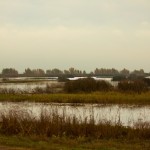For those of you in the Davis area, I’d like to point out a couple of great events coming up next weekend (Feb 23rd).
If you’re looking for something out of doors, nearby Yolo Bypass Wildlife Area is hosting the annual Duck Days bird celebration. YBWA sits just off I-80 along the causeway into Sacramento. It’s a fantastic place to see wildlife at pretty much any time of year. It’s also somewhere we’ve taken out-of-town speakers to go birding, and even done some sound recording for various projects in the lab (generally projects involving birds coping with traffic noise). For a nice write up about Duck Days in the Daily Aggie, click here.
The second event is the UC Davis Regional Animal Behavior Student Conference. Every other year, the symposium is opened up to students from other northern California schools, leading to a fantastic mix of talks and a fun opportunity for local behavioral biologists to get to meet each other. I can take a tiny bit of credit for spurring this along- I had attended a similar meeting in Southern California (the Southern California Animal Behavior, or SCAB, conference) while I was finishing up at Berkeley, and was hoping to replicate something like that here. I floated the idea to some faculty at Davis, and basically got the reaction: “Why would we need to invite people in, we’ve got such a great program here!?” Fortunately a couple of years later the students in ABGG were deciding what to do with a modest budget surplus, and I floated the idea of expanding their annual research conference to include nearby schools. Anyway, it’s a great chance to hear about cutting-edge research from the best and brightest at UC Davis and elsewhere.

